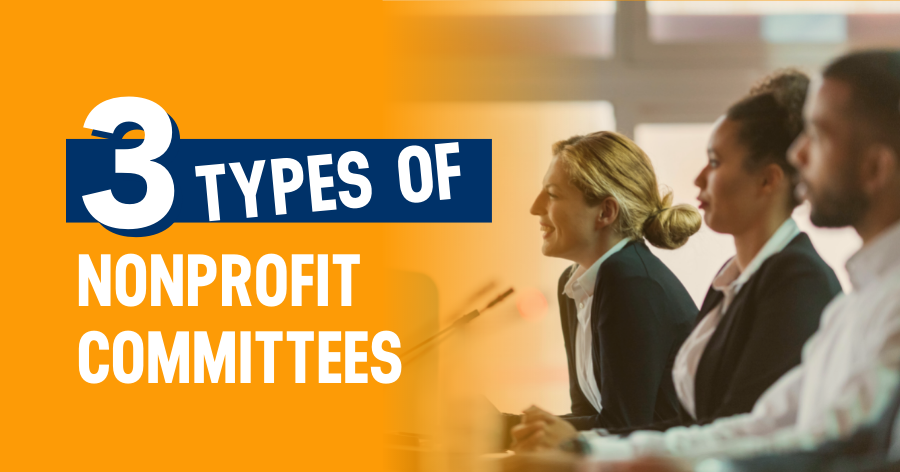
Successfully running a nonprofit requires the work of many in the organization – both volunteers and staff. Communication is an important element in helping to ensure that everyone knows their role in the organization. The basis of communication should include a volunteer and staff organization comprised of three different types of committees and task forces for nonprofits.
What Is a Nonprofit Committee & What’s Its Function?
A committee is a group responsible for overseeing the day-to-day running of the nonprofit organization. In general, the successful implementation of the strategic plan requires the work of many in the organization, including volunteers and staff.
As such, communication is essential in ensuring everyone knows their role in implementing the plan. Hence, the basis of communication should include a volunteer and staff organization and often comprises three different types of committees.
Who Serves on Nonprofit Committees?
Generally, the board will appoint directors to serve on committees, typically based on each director’s availability, interests, and expertise.
As a result, committees include board directors and non-directors, including employees and individuals from the community.
More so, executive directors commonly serve on one or all committees, where they can provide input but do not have a vote).
3 Essential Types of Nonprofit Committees
The Complementary Model of Board Governance identifies three organizational components for assisting in the management of the organization:
1. Board Statutory Committees
Board Statutory Committees, also known as Board Committees or Standing Committees, are established by the organization’s board of directors. The chairs of those committees regularly report back on their activities to the board.
They are mandated to deal with responsibilities outlined in the bylaws or enabling legislation of the organization, such as Member Discipline, Member Ethics, Board Nominations, or the NPO audit.
These committees, which are chaired by a board director, can also comprise both directors and non-directors. They are ongoing and provide written reports at each board of directors’ meeting.
Download your exclusive board performance self-evaluation form now.
2. Policy Task Forces
Policy Task Forces are established by the board of directors and regularly report their activities to the board. A board director always chairs them, and they’re comprised of members from the board and are mandated to examine and develop recommendations on board policy matters.
These Policy Task Forces have a limited time horizon, a defined “sunset” clause in their mandate, and are required to provide written reports for each board of directors’ meeting until their tasks are completed.
Their main focus is on examining and developing recommendations on board policies.
3. CEO Working Committees
CEO Working Committees are established by the CEO and report only to the CEO. They must deal with operational or management matters, such as administering the organization’s conferences, professional development programs, or fundraising. The chair of a CEO working committee is appointed by the CEO and may be either a staff member or a volunteer.
The committee can comprise staff, directors, and non-directors. Its composition is entirely at the discretion of the CEO. It is vital for directors serving on CEO working committees to recognize that in this committee capacity, they are not serving primarily as directors of the organization but serving at the request of the CEO. Reports on the activities of CEO working committees are produced at each board meeting through the CEO report.
Regardless of what type of committee or task force you are setting up for your nonprofit, the Terms of Reference for the group should clearly define the following:
- Purpose
- Chair and membership
- Responsibilities
- Meetings and time commitment
- Staff contact
- Budget
Need help increasing your nonprofit’s effectiveness?
An efficient board starts with the implementation of an effective governance model.
AMC’s governance training helps nonprofit boards navigate governance and management to stay focused on their organization’s mission and visions. It includes valuable tools and clear guidance to address many not-for-profit organizations’ governance challenges.
Join NPO Academy’s Online Board Governance Training and implement the Complementary Model of Board Governance to build an effective partnership between the volunteer board, CEO and staff.

